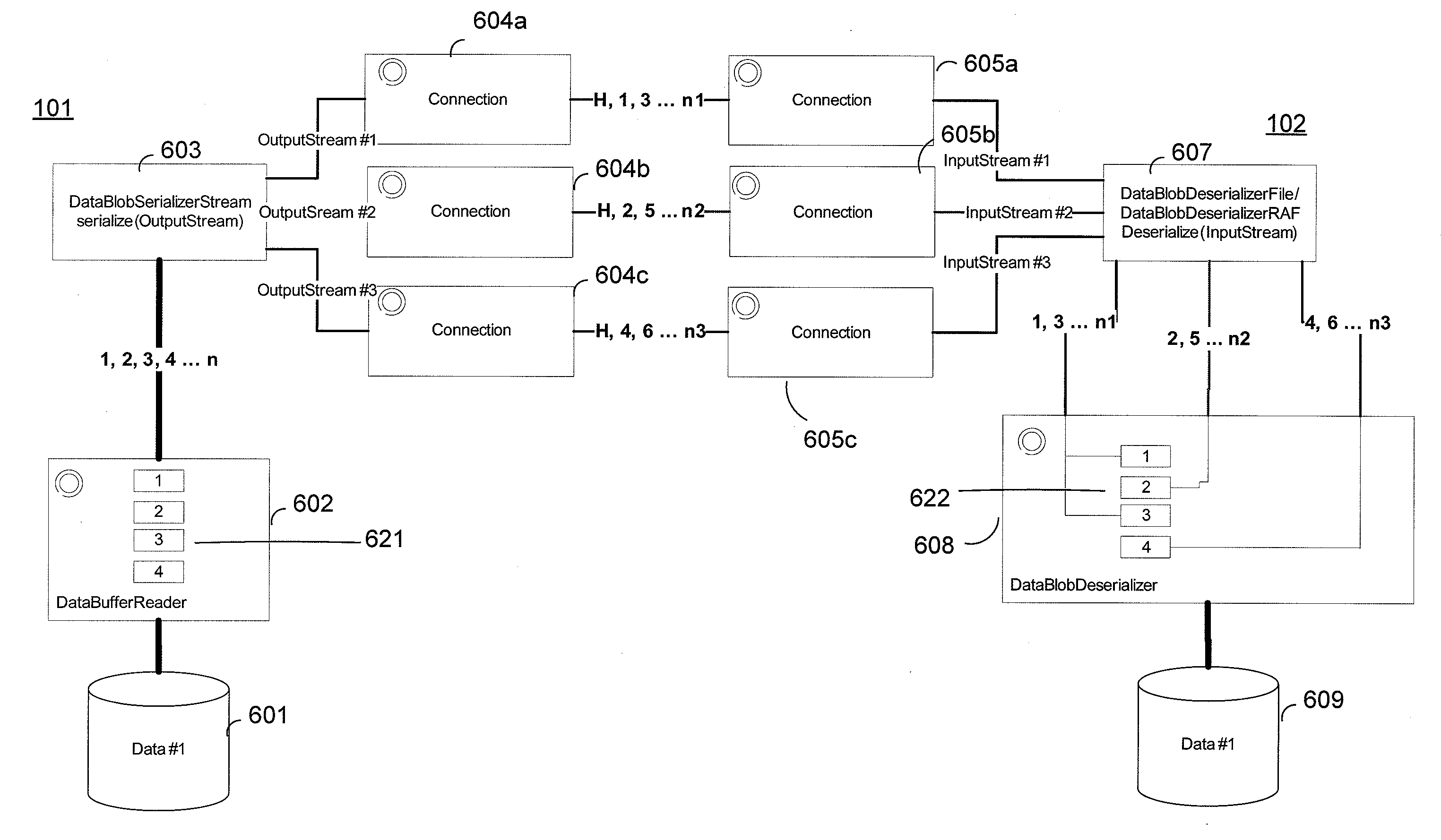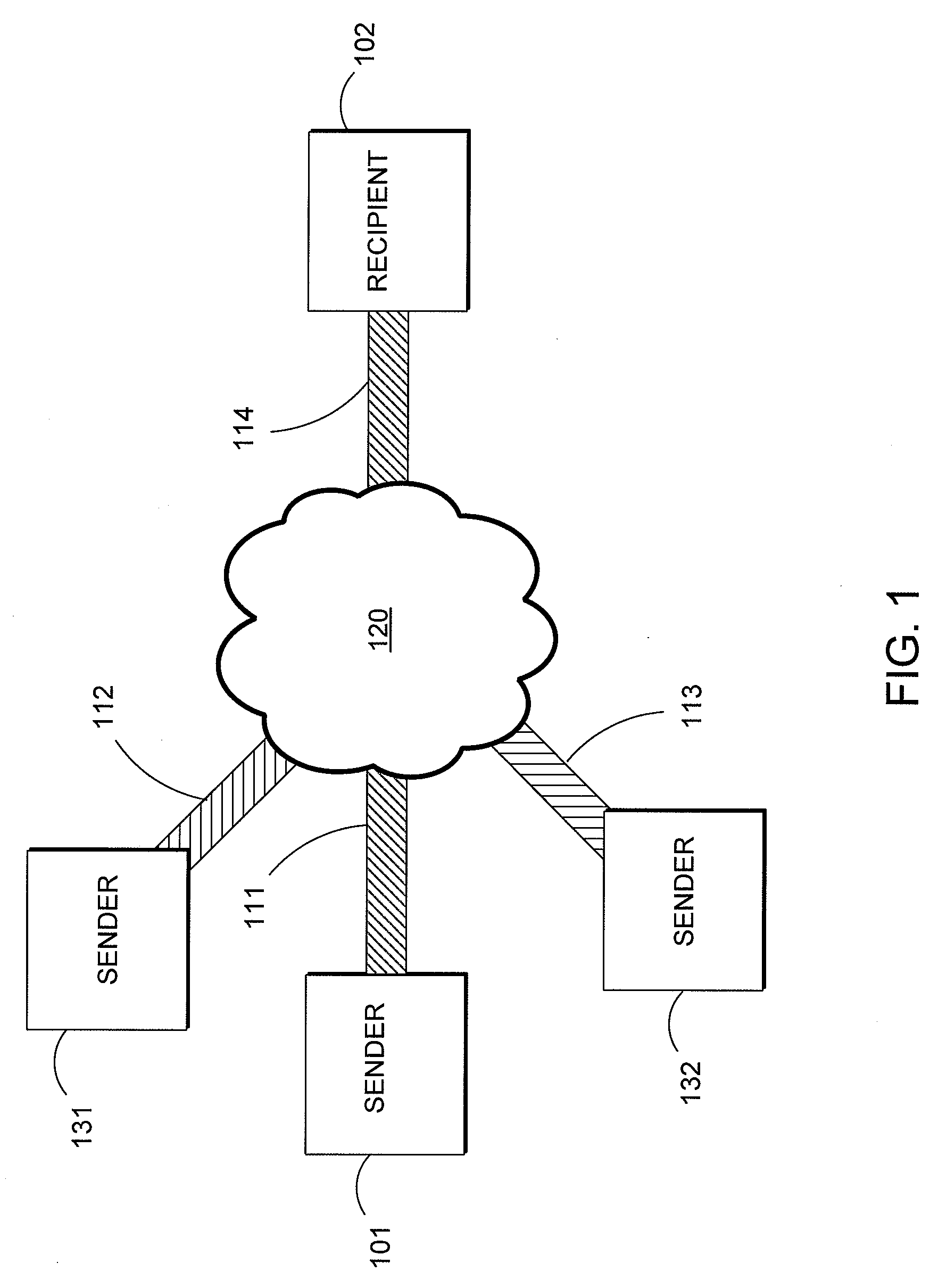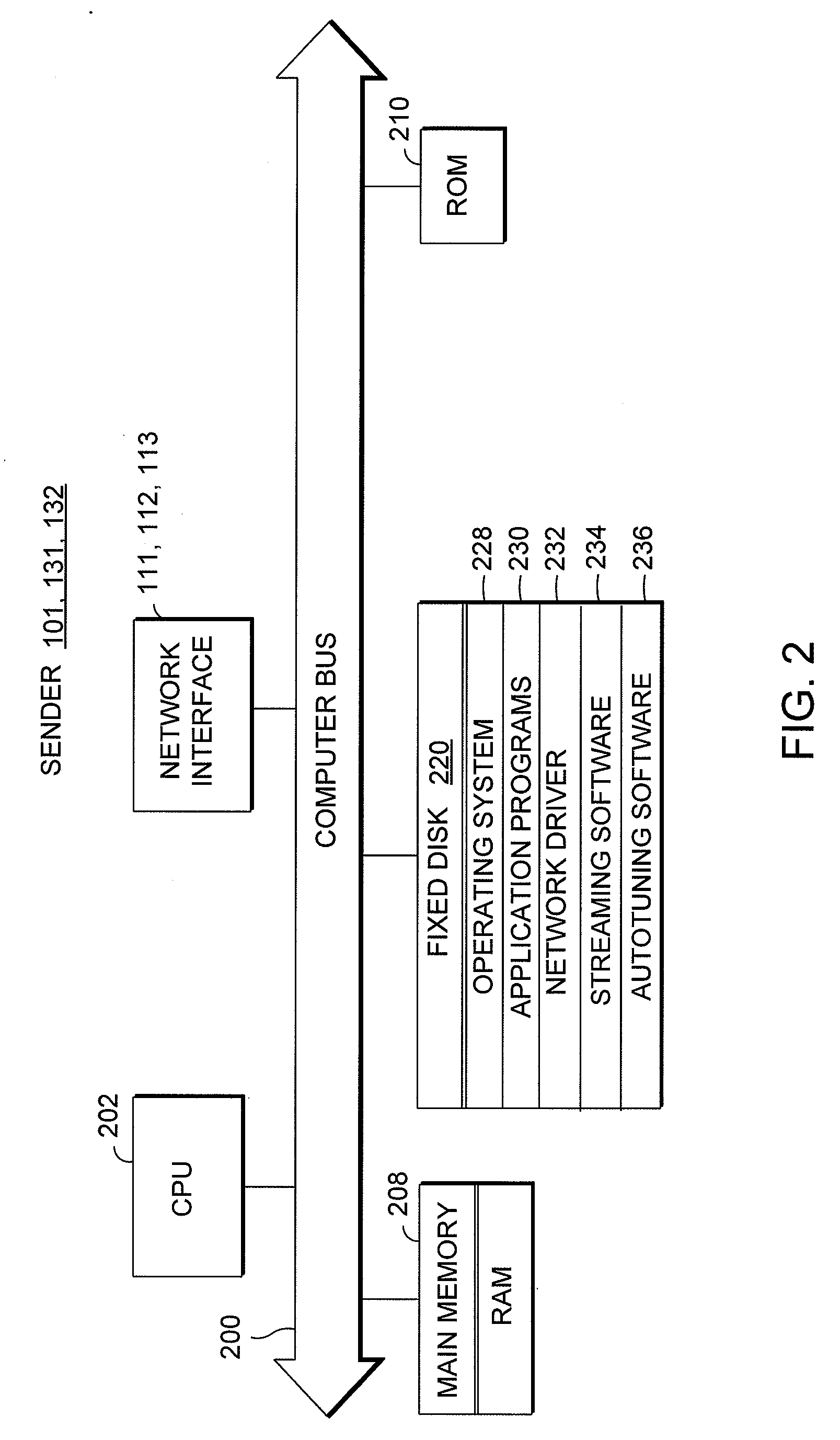Mechanism for autotuning mass data transfer from a sender to a receiver over parallel connections
a technology of parallel connection and mass data transfer, which is applied in the field of mass data transfer from a sender to a receiver over a network using a parallel data protocol, can solve the problems of monopolizing more available network sockets than the recipient is able to use, outperform the ability of the recipient to store data or the ability, and the amount of bandwidth made available might be so large, so as to reduce the delay or gap in sending data from the sender , the effect of smooth overall data
- Summary
- Abstract
- Description
- Claims
- Application Information
AI Technical Summary
Benefits of technology
Problems solved by technology
Method used
Image
Examples
Embodiment Construction
[0060]FIG. 1 is a representative view of multiple senders and a recipient, connected via a network, on which an architecture of an example embodiment may be implemented. As shown in FIG. 1, senders 101, 131 and 132 are connected to recipient 102 through network 120. More specifically, sender 101 is connected to network 120 through network interface 111, sender 131 is connected to network 120 through network interface 112, sender 132 is connected to network 120 through network interface 113, and recipient 102 is connected to network 120 through network interface 114. In FIG. 1, senders 101, 131 and 132 are shown to be connected via one network; however, in other example embodiments, senders 101, 131 and 132 and recipient 102 can be connected via more than one network. In addition, there may be more or less than three senders and more than one recipient connected to network 120 or connected to multiple networks.
[0061]Network 120 is an intranet, but in other example embodiments, networ...
PUM
 Login to View More
Login to View More Abstract
Description
Claims
Application Information
 Login to View More
Login to View More - R&D
- Intellectual Property
- Life Sciences
- Materials
- Tech Scout
- Unparalleled Data Quality
- Higher Quality Content
- 60% Fewer Hallucinations
Browse by: Latest US Patents, China's latest patents, Technical Efficacy Thesaurus, Application Domain, Technology Topic, Popular Technical Reports.
© 2025 PatSnap. All rights reserved.Legal|Privacy policy|Modern Slavery Act Transparency Statement|Sitemap|About US| Contact US: help@patsnap.com



